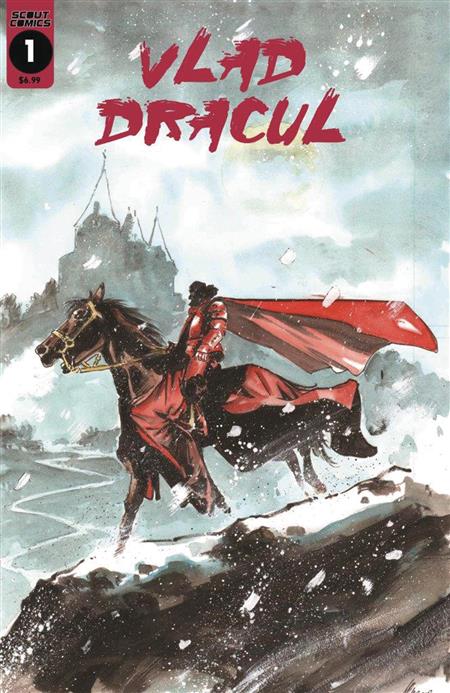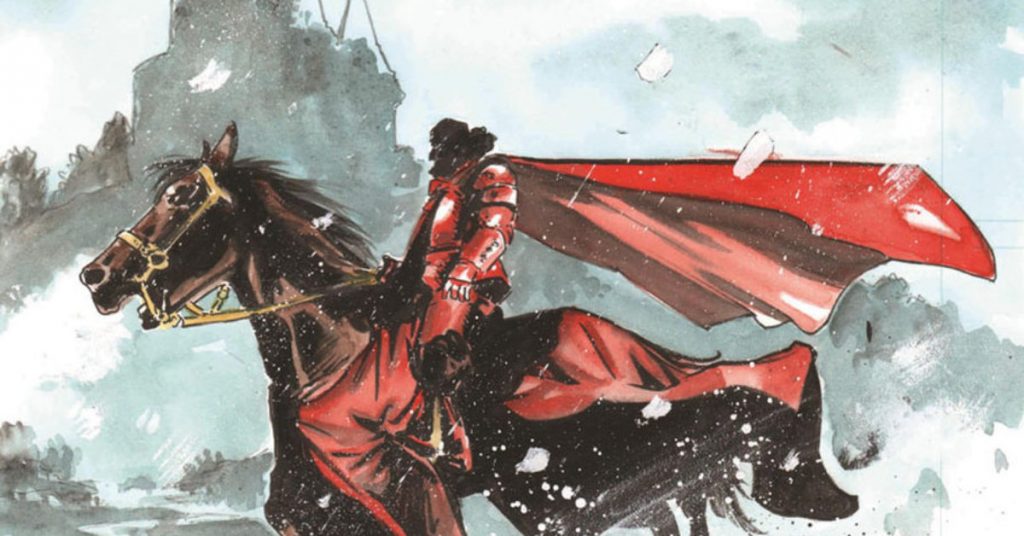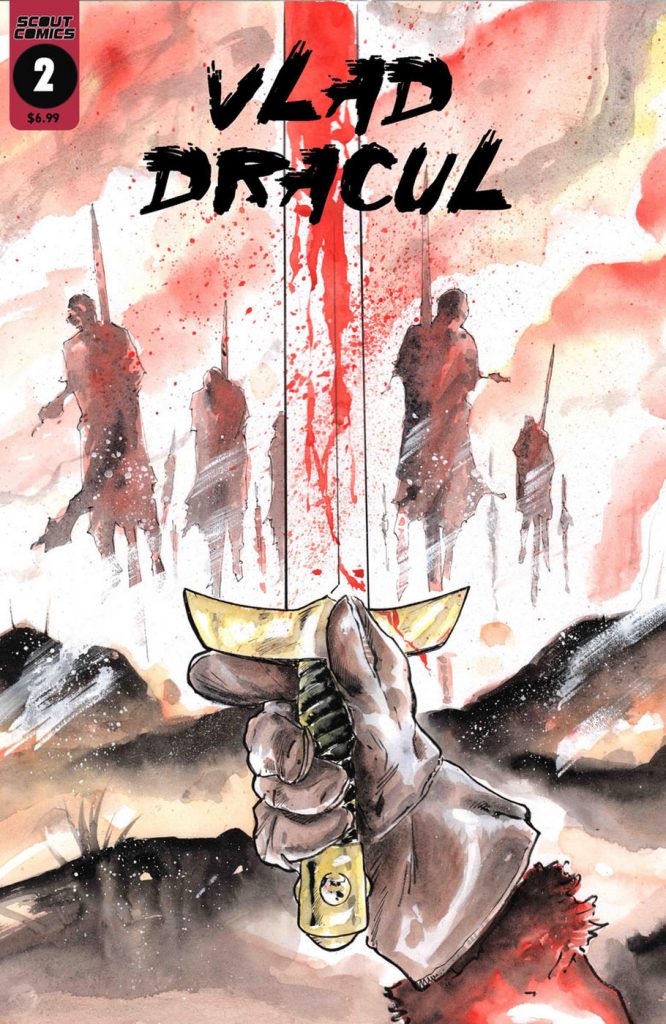
Writer: Matteo Strukul
Artist: Andrea Mutti
Letterer: Joel Rodriguez
Editors: Andrea Lorenzo Molinari & James Pruett
Publisher: Scout Comics
Available: July, 2020
Price: $6.99 (It’s a 64-page double-issue)
Out this month from Scout Comics is the first issue of Vlad Dracul, a fictionalized graphic of the life of Vlad Dracul III, Transylvanian leader of Wallachia in the late 15th century, by Matteo Strukul and Andrea Mutti.
You, of course, might know of Vlad by another name.
If you’re uninitiated into the lore of Vlad Dracul III, Son of the Dragon, Vlad the Impaler, Vlad Tepes, Vlad Dracula, prepare yourself for a brutal tale. Reality is, the man was a monster long before Bram Stoker got his creative mitts on him. Known as a blood-thirsty leader both among and on behalf of his own people, he was Voivode of Wallachia for much of his life and is regarded a hero of Romania in the modern day. Among many other exploits, he is credited for having led a bloody rebellion against the Ottoman Sultan, Mehmed II—during which he left thousands of Ottoman troops impaled on stakes as a caution against further incursion by the Empire. It is upon this coup that Strukul centers his story.
Well, that and Dracul’s affair with Katharina Von Siegel (which I believe to be part of Strukul’s fiction, though don’t quote me on that; Google didn’t have anything on her, at any rate). Which caused his wife and many of his locals no small amount of distress, since they blamed her for Vlad having declared war on Mehmed (a David & Goliath-esque proposition if ever there was one); apparently, they’d rather have sent the Sultan 1000 of their male children and a major pile of good (his demanded annual tribute). They’re quite the angsty bunch, you see.
Strukul presents an interesting take in this one: literature, both prose and graphic, is inundated with takes on Stoker’s Dracula; tales of Vlad Dracul, sans pointy teeth and presumably closer to reality? A bit less so. Instead of the vampire, we see the monster: blood-thirsty, selfish and impulsive—but passionate, fiercely independent and Wallachian-loyal even unto his death. And in terms of story, we get plots and sub-plots aplenty, and no shortage of character motivations left gestating for future harvest. Strukul does a nice job of relying primarily on dialogue and his artist to convey his ideas, offering the occasional set-defining and foreshadowing narrative bits to move the story along. We’re immersed right into the tension and the anger of 15th century Romania (Wallachia), a region begrudgingly under the thumb of the neighboring Ottoman Empire.
My complaints on Strukul’s writing, and they are the nit-pickiest of nit-picky, are twofold. First, the dialogue trends a bit modern-sounding (use of modern contractions such as “can’t” and “don’t”; “yeah” as opposed to “yea”); in a book this clearly and definitively set (both in narrative and via Mutti’s art, which we’ll address in a moment), I’m looking for more old-fashioned, hifalutin type talk, but that could just be me. Second despite this already being a double-length book and only the first chapter of the series, I felt like I could’ve seen more of the development of Dracul’s character, and specifically his relationship with Katharina, his wife and his people. But again, I’m picking hard here.
Which brings us to the art. And lemme tell you, it’s a wonder.

Andrea Mutti’s work in this book is gorgeous: from the cover through to the last page, each panel is a beautiful, if frequently bloody, watercolor-like rendering of 15th century Wallachia. Architecture and setting, while typically minimal, are nevertheless elegant. The characters’ moods—generally dour, angry or shocked—are conveyed effortlessly, with minimal line and brush stroke, and none more so than Vlad himself. Always decked in red, Mutti’s treatment of the Voivode is particularly effective: his eyes flashing crimson in periods of rage, the imperious lift of his chin, his casual power. Extremely well done, and an impressive achievement.
Joel Rodriguez, tasked with offering a great deal of information and dialogue within an art style not always lending itself to such intrusion, does his job admirably. Placing narrative and dialogue balloons and establishing flow to Strukul’s words without disrupting Mutti’s lines, Rodriguez also gets to play a bit with the book’s sounds effects, which are typically integrated into the art itself.
So, all in all an excellent debut, and one that’s got me more than curious about the second book. Is the team going to continue to (generally) follow the historical events of Dracul’s life? Are we going to see suggestions of his latent (fictional) supernatural traits? How badly is Lady Cnaejna going to lose it? Guess we’ll have to wait for issue two to find out…
You can find Vlad Dracul, issue one, at your trusty LCS, via Amazon or comiXology, or directly from Sout at scoutcomics.com. It’ll run you a bit more ($6.99) than the typical floppy, as it’s a 64-page beast, but I promise you, it’s worth every penny. And maybe those high school history students among you can use it as a source for your term paper…
Score: 11 (of 13)
Review by Andy Patch
Contributing Editor, thePullbox.com
